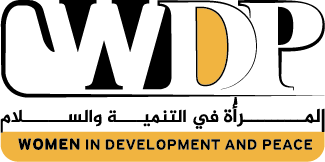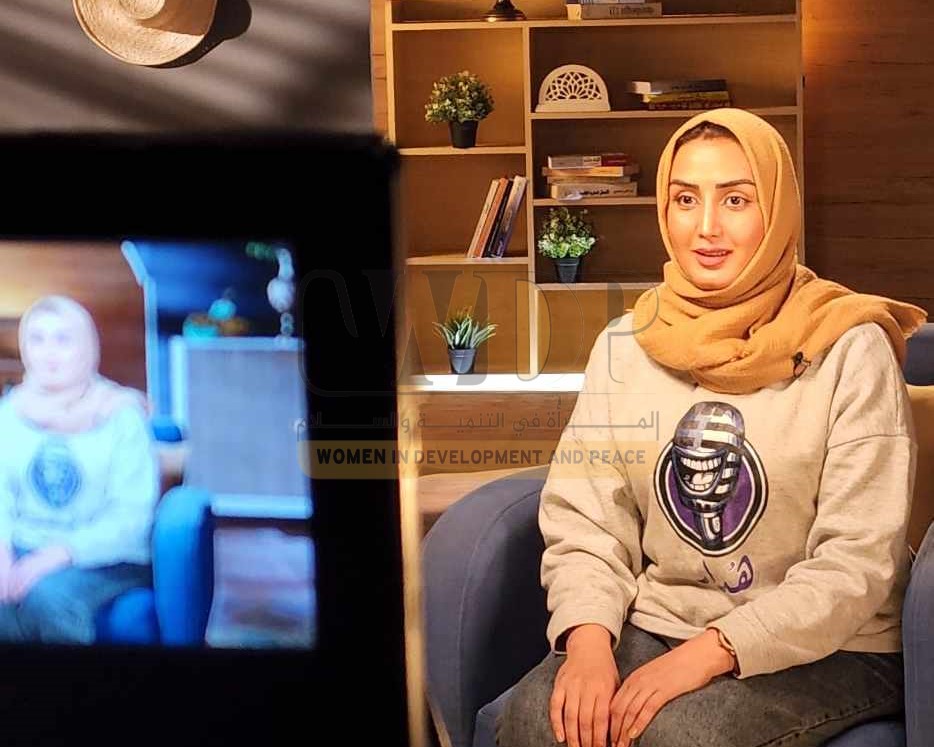Women in Development and Peace – Hanan Hussein
Social media has played a pivotal role in enhancing the presence of female journalists in Yemen, enabling them to reach a wider audience and express their opinions and ideas more freely. This is evident through the emergence of numerous Yemeni women journalists on social media platforms, who provide diverse and comprehensive content across various programs and news topics.
Key Roles
Lama Dabwan, a television presenter, speaks, saying, “From my perspective and the perspective of many, social media is an effective tool that helps draw the world’s attention to women’s rights issues in general. The extensive use of social media, especially by women, has supported women’s issues and rights, making them one of the most important topics that media outlets focus on.”
She adds, “This allows these issues to reach a larger audience. We can acknowledge the role of technological advancements and new communication channels as key tools in establishing the presence of women in media. Social media has become an alternative to television channels, accessible to everyone, and has gained dominance in various arenas, greatly empowering and supporting women in media.”
Elham Qaid, a radio program director, speaks on the matter, saying, “Social media plays a significant role in the field of media serving Yemeni women. It has helped them present their social issues by offering specialized programs prepared and presented by talented female journalists, who professionally address societal matters. Additionally, there are digital radio platforms on social media that specifically focus on Yemeni women and their issues, providing insights into their daily lives and working towards solving and discussing certain topics.”
She further adds, “This is why social media plays a crucial role in assisting female journalists in delivering their message. As a morning program director on multiple radio stations, many female broadcasters have focused on women, their issues, and their interests.”
Importance & Necessity
Women in the media field hold importance and necessity, and their presence ensures balance in presenting media topics and issues. Here are some opinions regarding this matter as follows:
- Lama Dabwan spoke about the importance of social media from her perspective as a journalist who publishes and comments on these diverse platforms. She said, “These platforms have contributed to collective cultural exchange and communication between cultures. The emergence of social media platforms has blended different cultural modes of thinking and expression. This has greatly helped many female journalists in gaining support, participation, and even constructive criticism. Additionally, it has facilitated the exchange of opinions and discussions, allowing them to acquire knowledge and develop themselves in the media field.”
- Elham Qaid emphasizes the importance of women’s presence in this field, but also highlights the need for a high level of responsibility due to its impact on others. She states, “The presence of women in the media field is of great importance. Female journalists (whether in radio or print) should be well-informed about everything that is new and has an impact on society. They should convey the benefits of such information, ensuring its presence and influence in the minds and conscience of the community.”
Creating Job Opportunities for Female Journalists
Recently, we find that social media has contributed to providing new employment opportunities for Yemeni women. Many Yemeni female journalists now rely on these platforms as a primary source of income. This has helped achieve the independence of Yemeni women and enhance their status in society.
Undoubtedly, social media has helped create job opportunities for Yemeni female journalists. Many Yemeni media institutions now depend on these platforms to disseminate their content and attract audiences. This has led to an increased demand for Yemeni female journalists who have experience in using social media.
Elham Qaid commented, saying, “Social media platforms have pushed female journalists towards specialized topics by creating platforms that focus on specific fields. They have also helped them provide media services more easily and reach a wider audience.”
She added, “We find that the presenter has become a content creator, launching on the small screen and providing information without the need for a director or sound engineer. This has been noted recently with the presence of the podcast platform, which allows for knowing the public’s opinions on various topics. Therefore, it has provided job opportunities for many female journalists.”
Kholoud Abdullah believes that social media platforms have contributed to providing opportunities for female journalists to work in various fields, such as journalism, news preparation and dissemination, analysis, report writing, and presenting entertainment and social programs on social media platforms.
Lama Dabwan confirmed that these virtual platforms have played a prominent role in providing a source of income. She said, “These platforms have provided job opportunities for many female journalists because technology has made the world a small village. Through it, people have been allowed to get to know each other and discover each person’s abilities and talents.”
She added, “These media platforms have helped journalists keep up with market trends, stay informed about what’s new in all fields, and share and exchange information and experiences from various specialties. This has significantly contributed to the productivity of media professionals.”
Content Creation
Social media platforms have played a role in empowering exceptional women to appear professionally and deliver meaningful content. Alanod Aref commented on the prominent role of these platforms, as she is a social and diverse content creator.
Alanod believes that social media sites have greatly contributed to amplifying the voice of Yemeni women and expanding their fame. She says, “Female journalists and content creators face many challenges and difficulties, including attacks, bullying, non-acceptance, and frustration. They are subjected to offensive words or insults. Nevertheless, these platforms have strongly supported women despite all the obstacles.”
She added, “One of the biggest challenges that journalists and content creators may face is Yemeni society itself and its somewhat closed mindset. It does not accept the presence of women in general and does not provide any support to them. Women in the media field live in a great and intense struggle between wanting to voice their opinions to everyone and a society that fundamentally rejects their existence.”
Alanod believes that times have changed significantly and adds, “One of the notable changes lies in the state of society. In the past, female journalists had less visibility, but they did not face the difficulties that this generation faces. The reach and visibility have become broader and faster, but at the same time, they encounter many challenges. Therefore, I believe that the current situation of Yemeni female journalists is more difficult.”
Obstacles & Difficulties
Lama recalls several obstacles that female journalists face, stating, “Female journalists face many difficulties and threats that hinder them. They also suffer from discrimination and gender inequality simply because they are women. They are subject to a lot of criticism and bullying when appearing on these platforms.”
Elham Qaid emphasizes that society is a major reason for hindering women’s progress in the media field. She says, “Unfortunately, we live in a conservative society to varying degrees depending on the region. Yemeni female journalists have faced a lot of bullying and unwelcome criticism. There are groups of people who do not focus on the essence of the information provided by female journalists but rather judge them based on their appearance.”
She adds, “Female journalists may adhere to societal customs and traditions, and they face a lot of familial pressure. This is something I personally struggle with because I have not been able to openly appear on electronic platforms due to social customs and traditions that prevent me from doing so.”
Solutions & Interventions
Lama Dabwan discusses the key solutions that enhance the presence of women in the media field, saying, “From my perspective, the solutions lie in raising awareness and promoting the role of women in the media wherever their male counterparts are present. Women are half of society and partners in success with men. The retrogressive view that confines women to the home should be abandoned, thus putting an end to this problem.”
She emphasized the importance of non-discrimination and ensuring gender equality, stating, “Positions in the media field should be open to women just as they are to men. Media diversity should be available to everyone without discrimination, and female journalists should have the freedom to express themselves without extremism and racism.”
Elham Qaid also commented on the key solutions, saying, “Firstly, society needs to be aware that female journalists provide information and should not be treated as commodities for display. Secondly, opportunities should be provided for female journalists to develop their skills through workshops that empower them to overcome the obstacles faced by women on electronic platforms.”
Alanod Aref emphasizes the importance of Yemeni female journalists and content creators delivering meaningful content while respecting societal customs and traditions. She believes it is essential not to engage in futile battles with the conservative Yemeni audience.
Social media platforms have provided Yemeni female journalists with a new dimension of recognition and fame. They have empowered women in the media field and improved their access to information and news. These platforms have facilitated the dissemination of information, benefiting society, fostering professional and personal relationships, and creating job opportunities.

